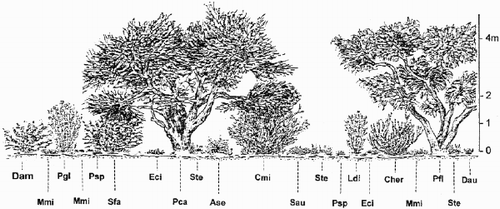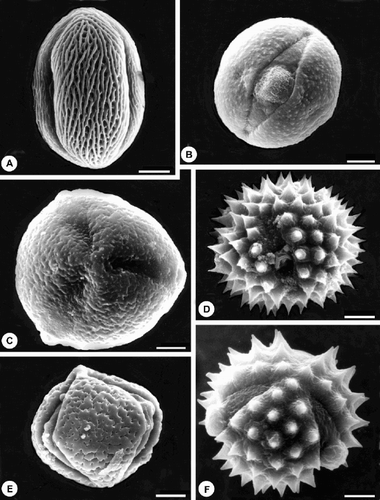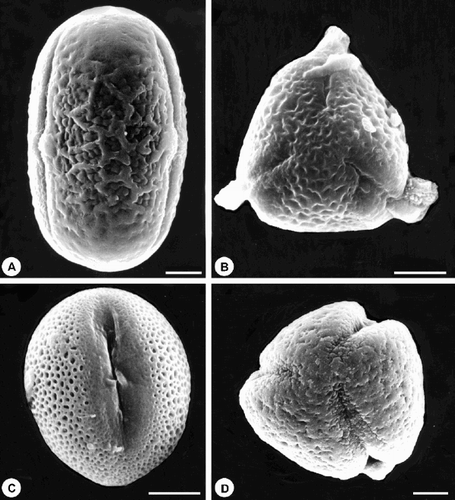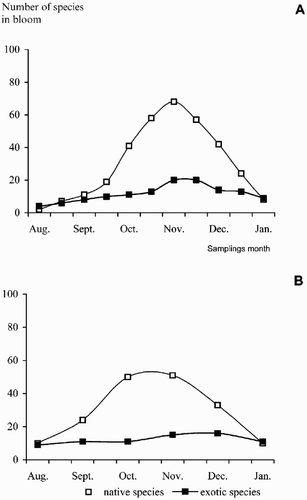Figures & data
Fig. 2. Profile of typical vegetation of the Caldenal (modified from INTA, 1980).
Dam – Discaria americana, Mmi – Medicago minima, Pgl – Prosopidastrum globosum, Psp – Plantago sp., Sfa – Schinus fasciculatus, Eci – Erodium cicutarium, Pca – Prosopis caldenia, Ste – Stipa tenuis, Ase – Acantholippia seriphioides, Cmi – Condalia microphylla, Sau – Sphaeralcea australis, Ldi – Larrea divaricata, Cher – Chuquiraga erinacea, Pfl – Prosopis flexuosa, Dau – Draba australis; m – meters.

Table I. Meteorological data and weight of pollen loads collected by honey bees.
Table II. Data of blooming and percentages of pollen species, which were more than 1% of total loads collected during 1997 and 1998.
Fig. 4. SEM micrographs of main pollen types from native plants collected by the honey bees in the Caldenal: (A) Schinus fasciculatus; (B) Chuquiraga sp.; (C) Prosopis alpataco; (D) Hysterionica jasionoides; (E) Prosopidastrum globosum; (F) Grindelia tehuelches. Scale bar – 5 μm (A, C, D & E); 10 μm (B & F).

Fig. 5. SEM micrographs of main pollen types from native plants collected by the honey bees in the Caldenal: (A) Vicia pampicola; (B) Condalia microphylla; (C) Larrea divaricata; (D) Discaria americana. Scale bar – 5 μm.


